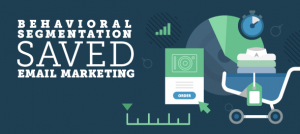 Do you know the value of your customers?
Do you know the value of your customers?
More specifically, do you know the value of your customers throughout their lifetime with you as it compares to what you spent to gain those customers?
I know, I know…we should all place the highest value on our customers but I’m not talking about some ethereal, emotional stuff or your company culture here. I’m talking about real numbers – the true monetary value of your customers. You absolutely MUST know this metric!
The overplayed excuse of “my company is different” doesn’t fly here. (For the record, it doesn’t fly for any core growth or marketing metric. No business is too complicated or different to know how they’re actually performing.)
The good news is that this article will help you figure out your LTV:CAC, along with why it matters to your company’s overall performance. As a reminder, you must first know your Customer Acquisition Cost before you can apply this formula.
Let’s get to it.
What is LTV:CAC?
While the name of this metric sounds long and complicated, the actual definition is quite simple.
LTV:CAC is an estimate of the total value your company receives from each client in comparison to what you spent to acquire that client.
The formula itself is a simple ratio calculation. We’ll dive into how to derive this ratio shortly, but let’s examine why this ratio is even important.
Why Your LTV:CAC is so Important
Put simply, your LTV:CAC ratio allows you to easily define your Return on Investment (ROI) performance and develop a more educated growth strategy.
For example, a higher LTV:CAC means your sales and marketing teams are delivering more ROI to your bottom line. In other words, a higher customer lifetime value coupled with lower acquisition costs always results in stronger ROI.
Yet, believe it or not, the highest possible LTV:CAC is not always an ideal end result. “Are you crazy?! Who wouldn’t want the highest ROI possible,” you ask?
Well, consider this…
A LTV:CAC that’s too high often means that while your current customers are delivering great ROI, your new customer acquisition initiatives may be suffering – reducing the speed of your business growth. Thus, you must use this metric as a benchmark against your general business growth goals.
Like most things in life, the key here is balance.
The LTV:CAC Formula
To determine your LTV:CAC, you must first have a grasp on your Customer Lifetime Value (LTV). Here’s how to determine your LTV:
LTV = (Customer Revenue in a Period of Time – Gross Margin) ÷ Estimated Churn % for that Customer
Now, once you’ve got that figure you can simply compare it to your Customer Acquisition Cost (CAC) expressed as LTV:CAC.
Let’s look at a quick example:
LTV = $ 500,000
CAC = $ 150,000
LTV:CAC = $ 500,000:$ 150,000 = 3.3 to 1
Beyond Your LTV:CAC
So what makes a good LTV:CAC?
Unfortunately, I can’t answer that for you since you’re the only one that can say whether or not this ratio aligns with your revenue and growth goals.
However, at least you now know how to derive this number from your current metrics and apply it toward your own growth strategies.
Determine how to find several more growth driven metrics in my agency’s free guide: The 6 Metrics Your Boss Actually Cares About
Business & Finance Articles on Business 2 Community(82)
Report Post





